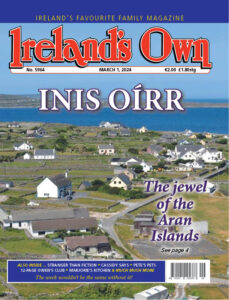By PAULA REDMOND
Before the well documented Great Famine of the late 1840s and early 1850s, a previous famine resulting from an extreme drop in temperatures occurred in the 1740-1742 period. It is estimated that anywhere between 100,000 – 300,000 people died out of a population of 2.4 million at that time.
A very violent storm struck Ireland in December 1739. This precipitated a period of extreme cold which saw the Boyne, Liffey, Slaney, Foyle and Lee rivers freeze over. Sections of the Shannon also froze.
 Europe was also struck by the extreme temperatures. It is theorised that the temperature drop was as a result of volcanic eruptions on the Kamchatka peninsula in Russia, which released large quantities of volcanic dust into the atmosphere, thus blocking out sunlight.
Europe was also struck by the extreme temperatures. It is theorised that the temperature drop was as a result of volcanic eruptions on the Kamchatka peninsula in Russia, which released large quantities of volcanic dust into the atmosphere, thus blocking out sunlight.
The extreme cold commenced on December 29th, 1739, which led to liquids freezing indoors and ice sheets appearing at the mouths of rivers. Birds were reported to have dropped from the sky, frozen in flight.
Some were initially amused by the freezing conditions – dances and carnivals were held in various locations on the ice. A hurling match is purported to have taken place on the Shannon and a fair held on the River Lee.
Any initial novelty soon disappeared however. With the rivers blocked by ice, coal could not be delivered to ports. Potatoes, stored in the ground, were destroyed and mills seized up due to the freezing conditions. Animals, such as cattle and sheep, perished and large quantities of fish died, especially in northern counties along Lough Neagh and Strangford Lough.
Continue reading in this week’s Ireland’s Own


